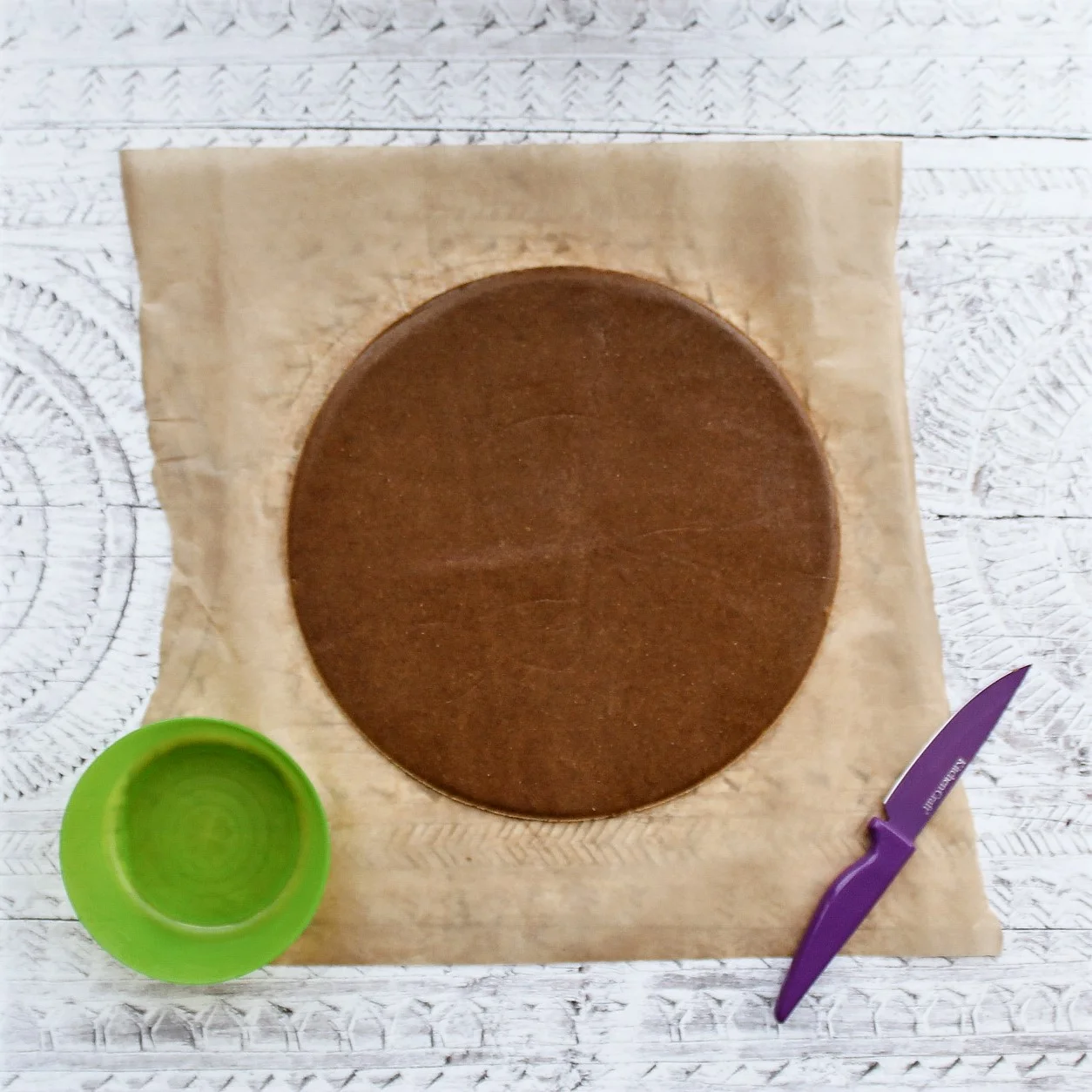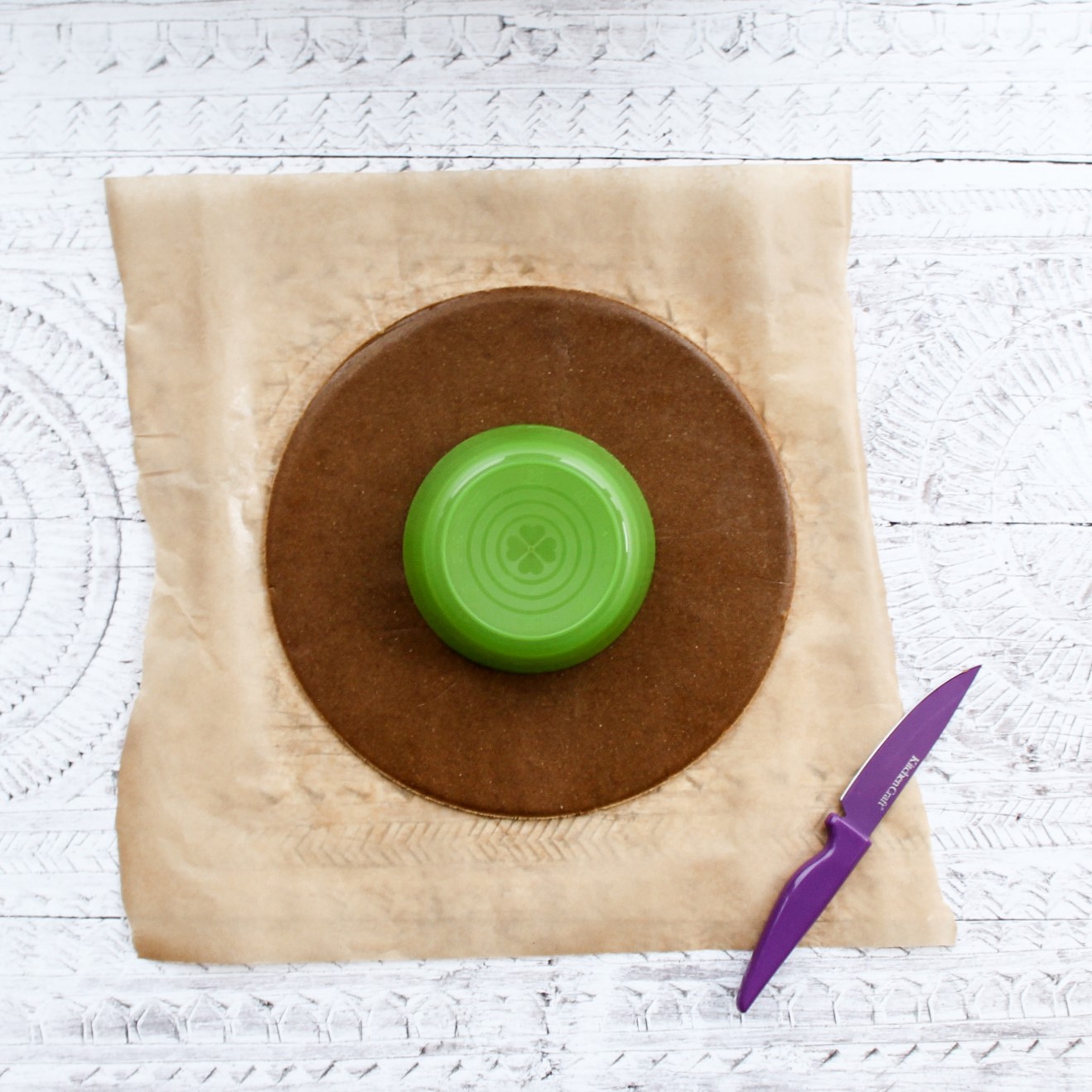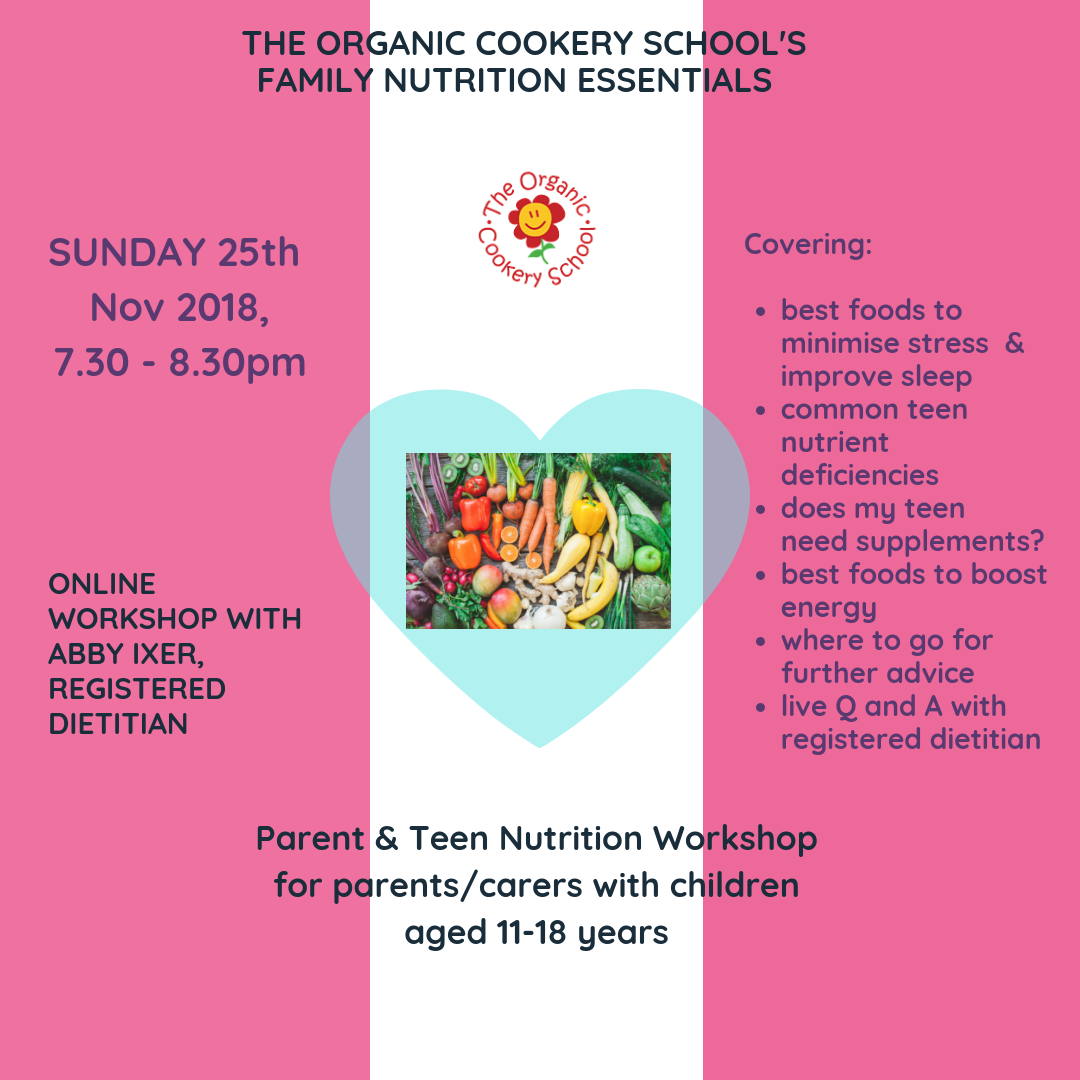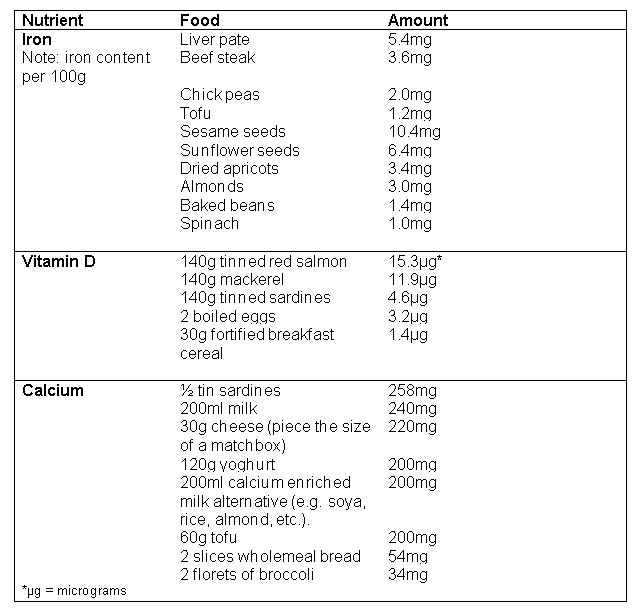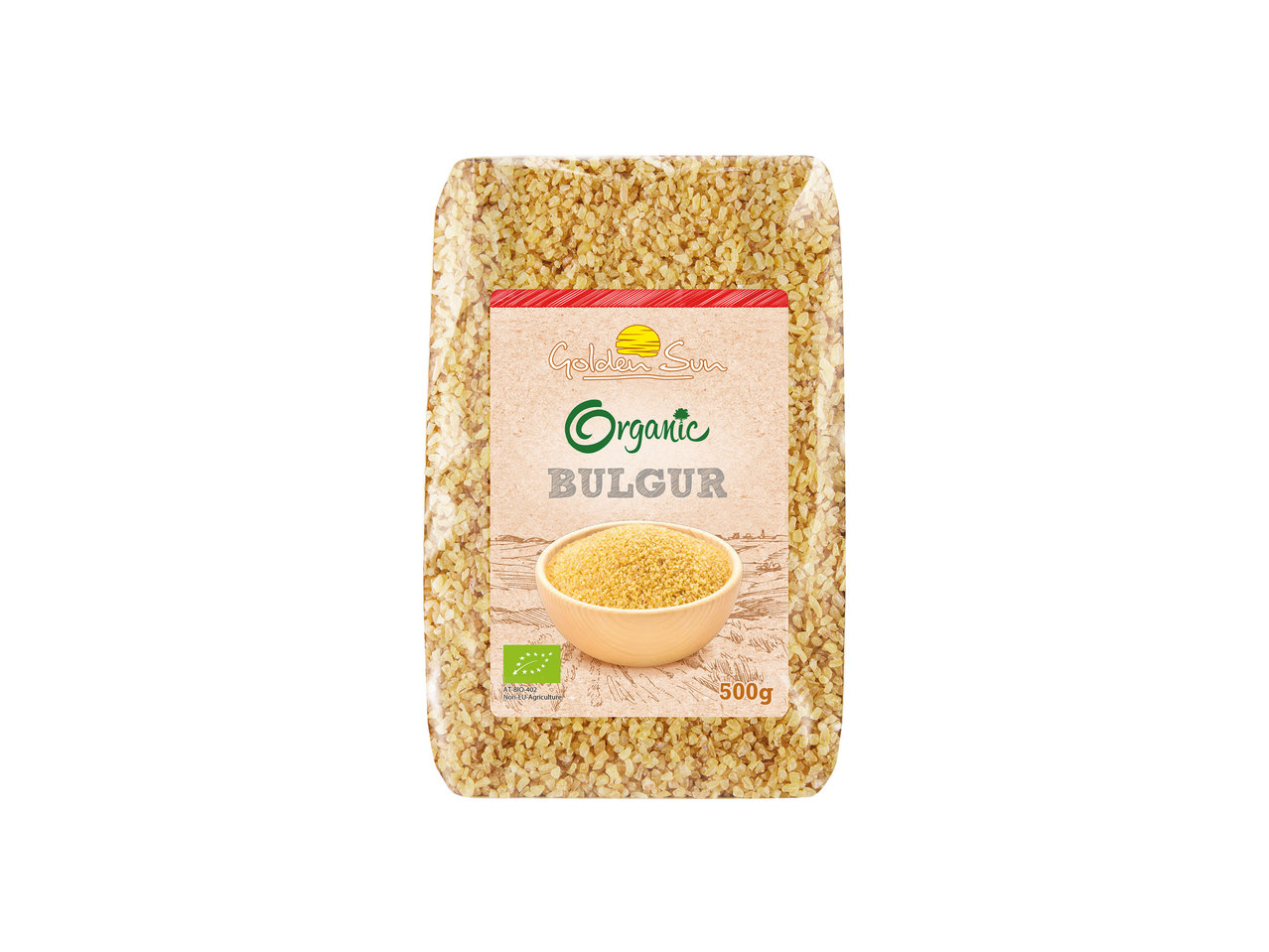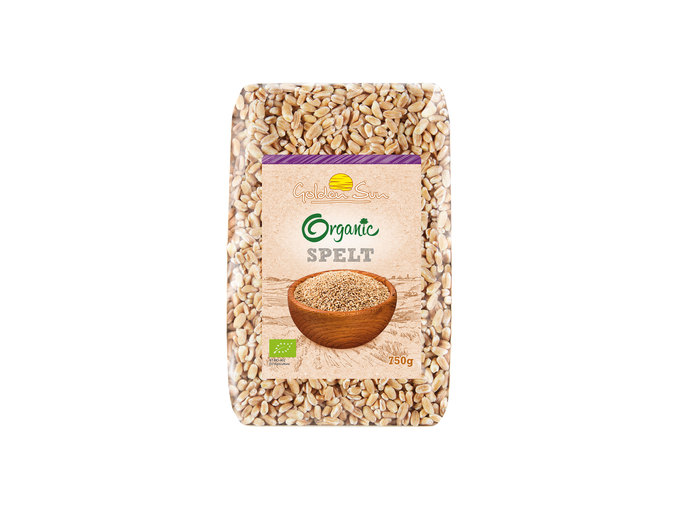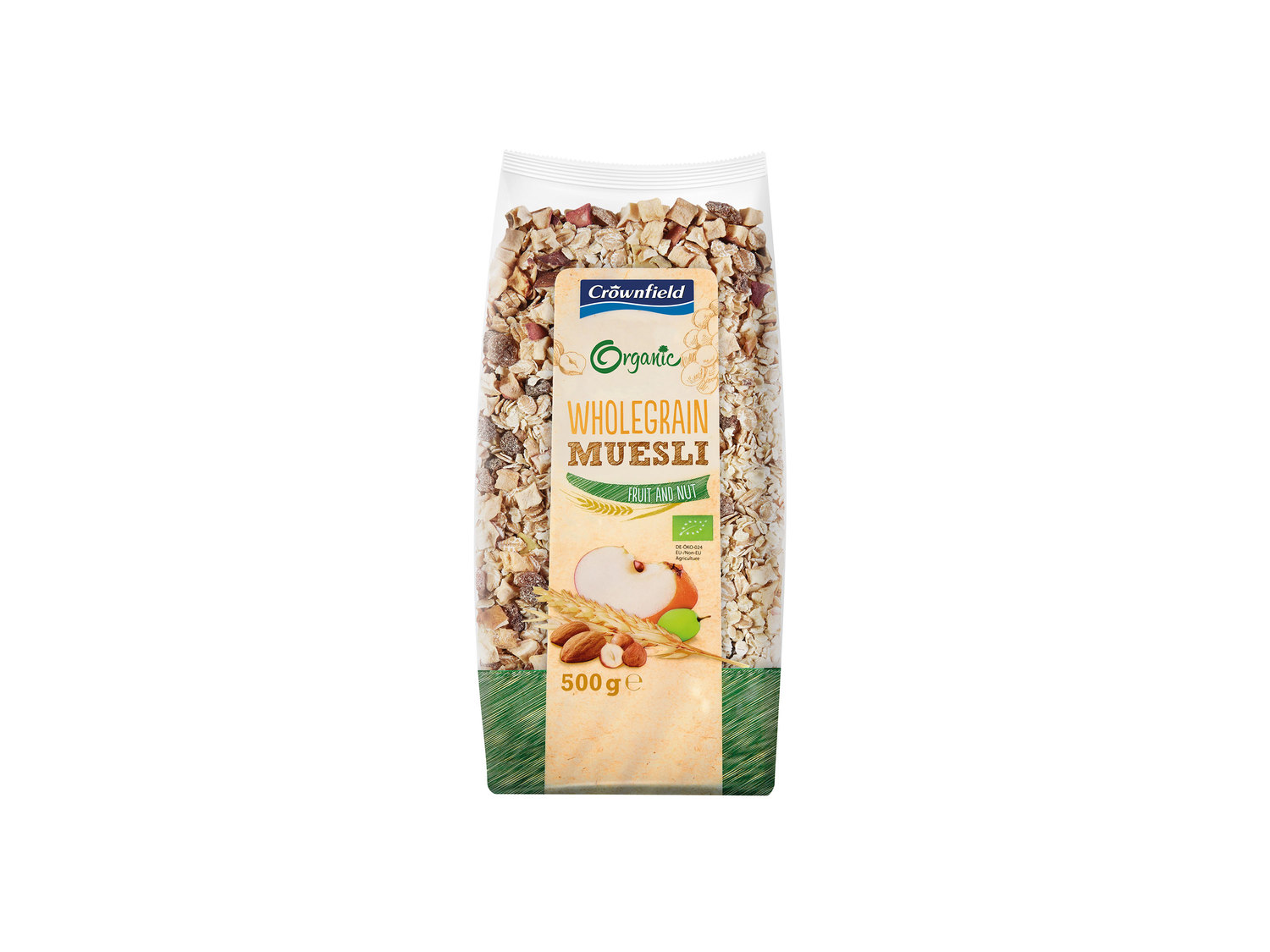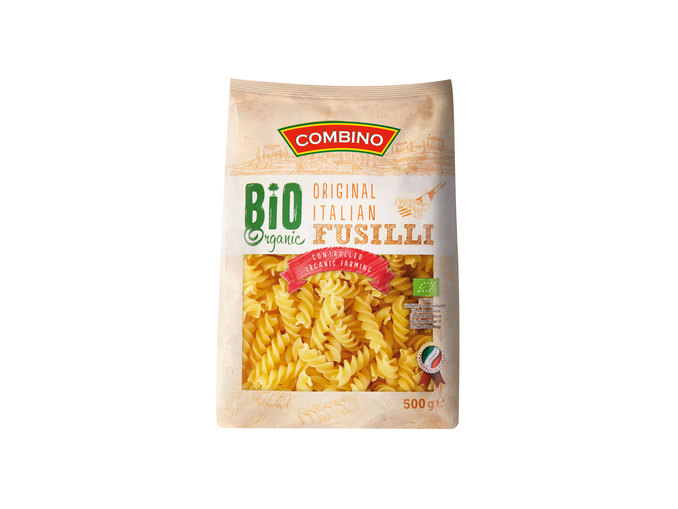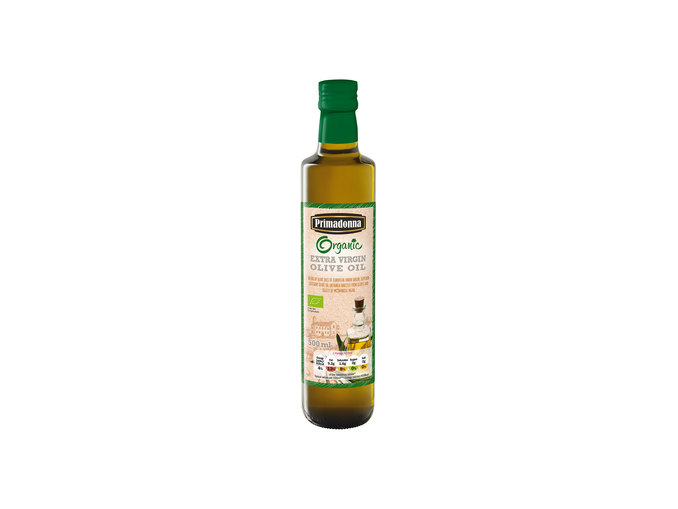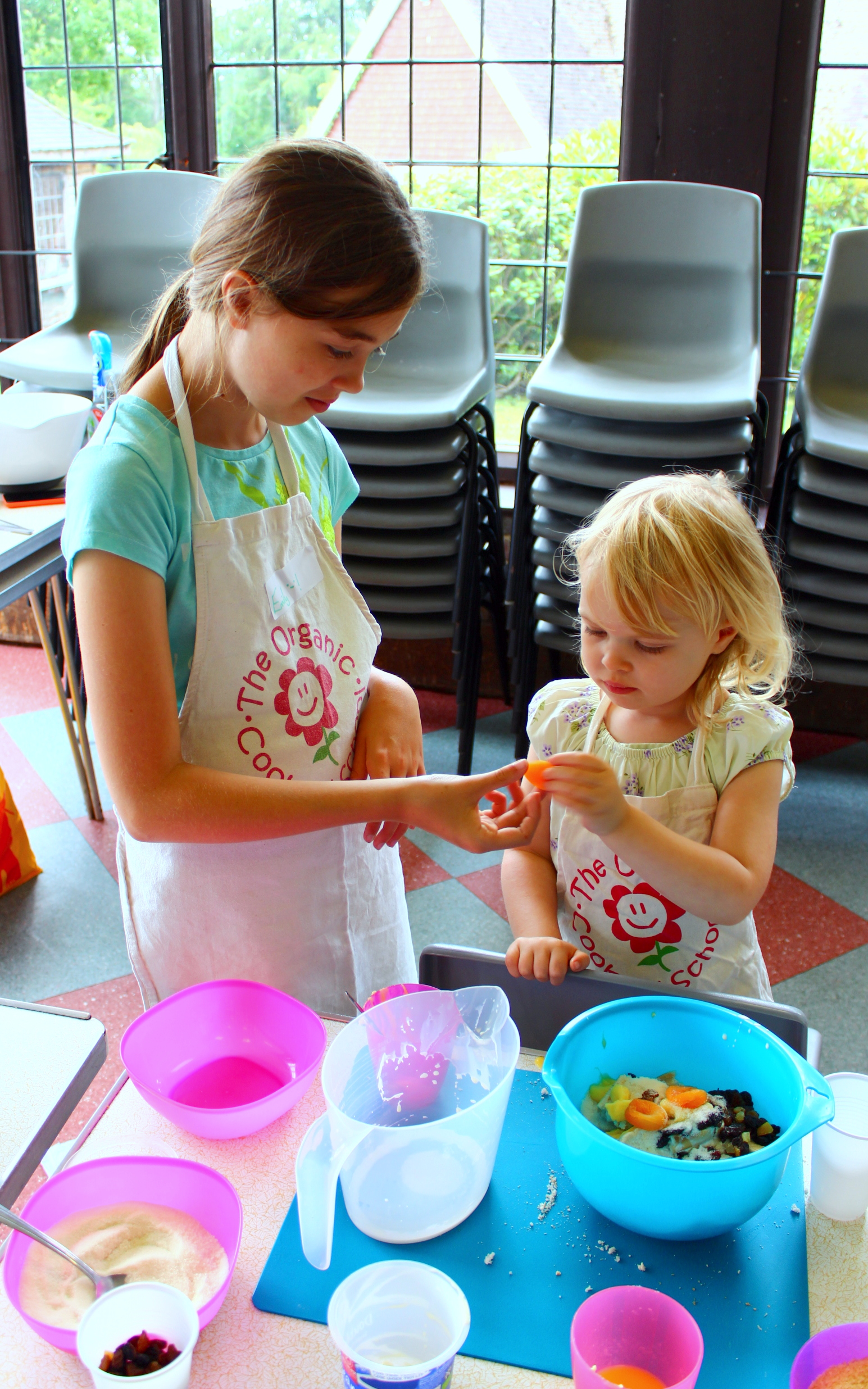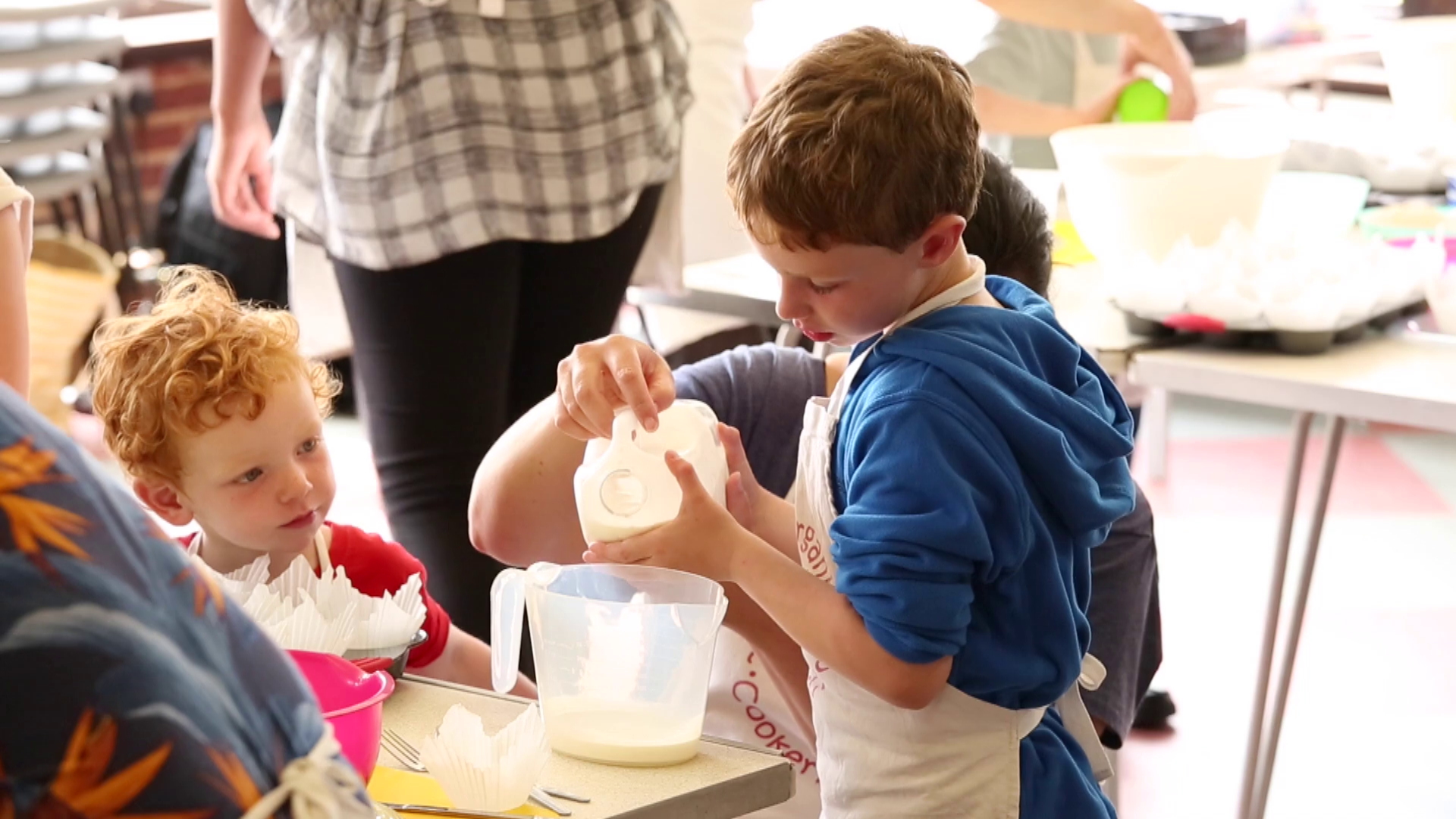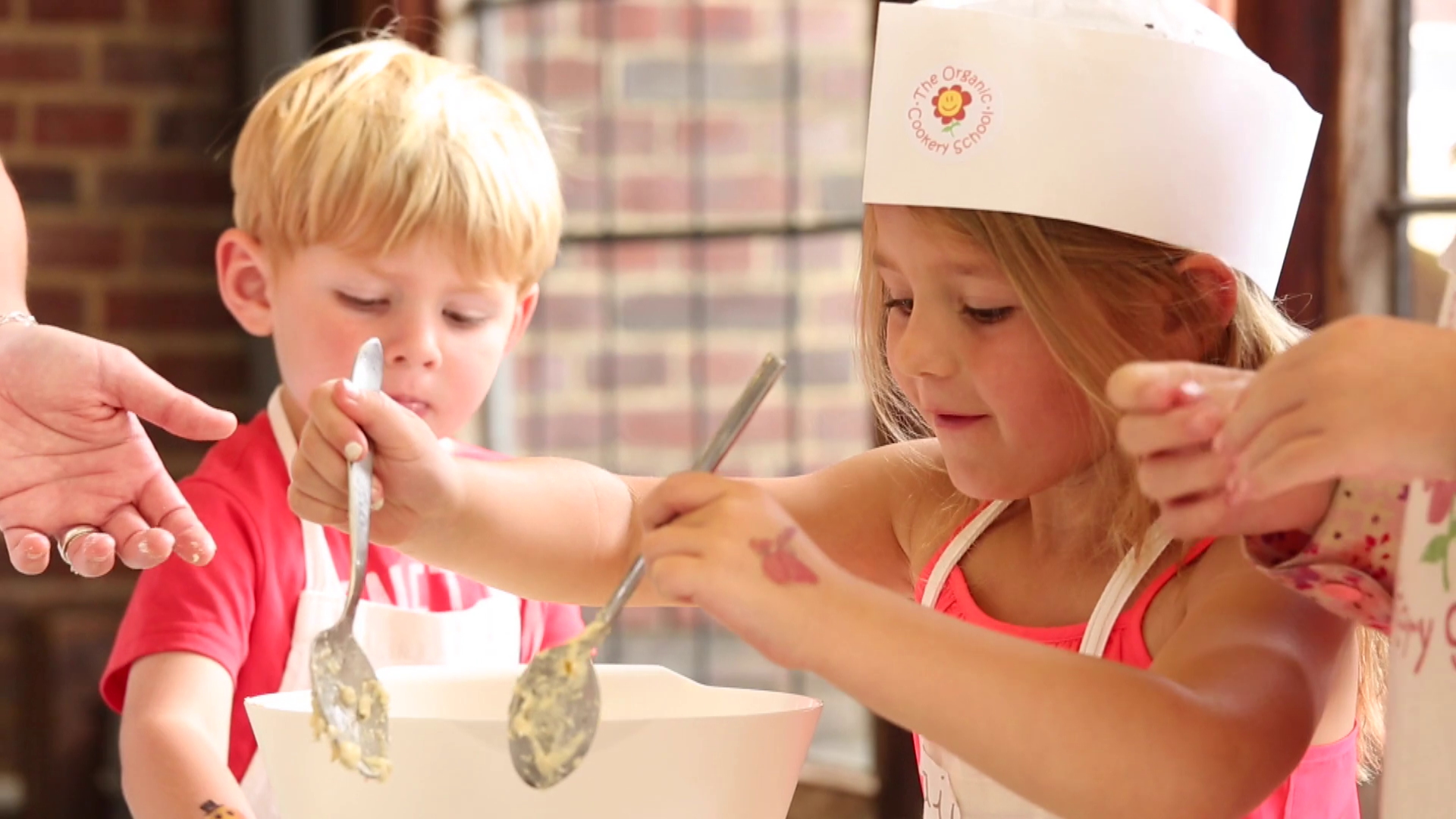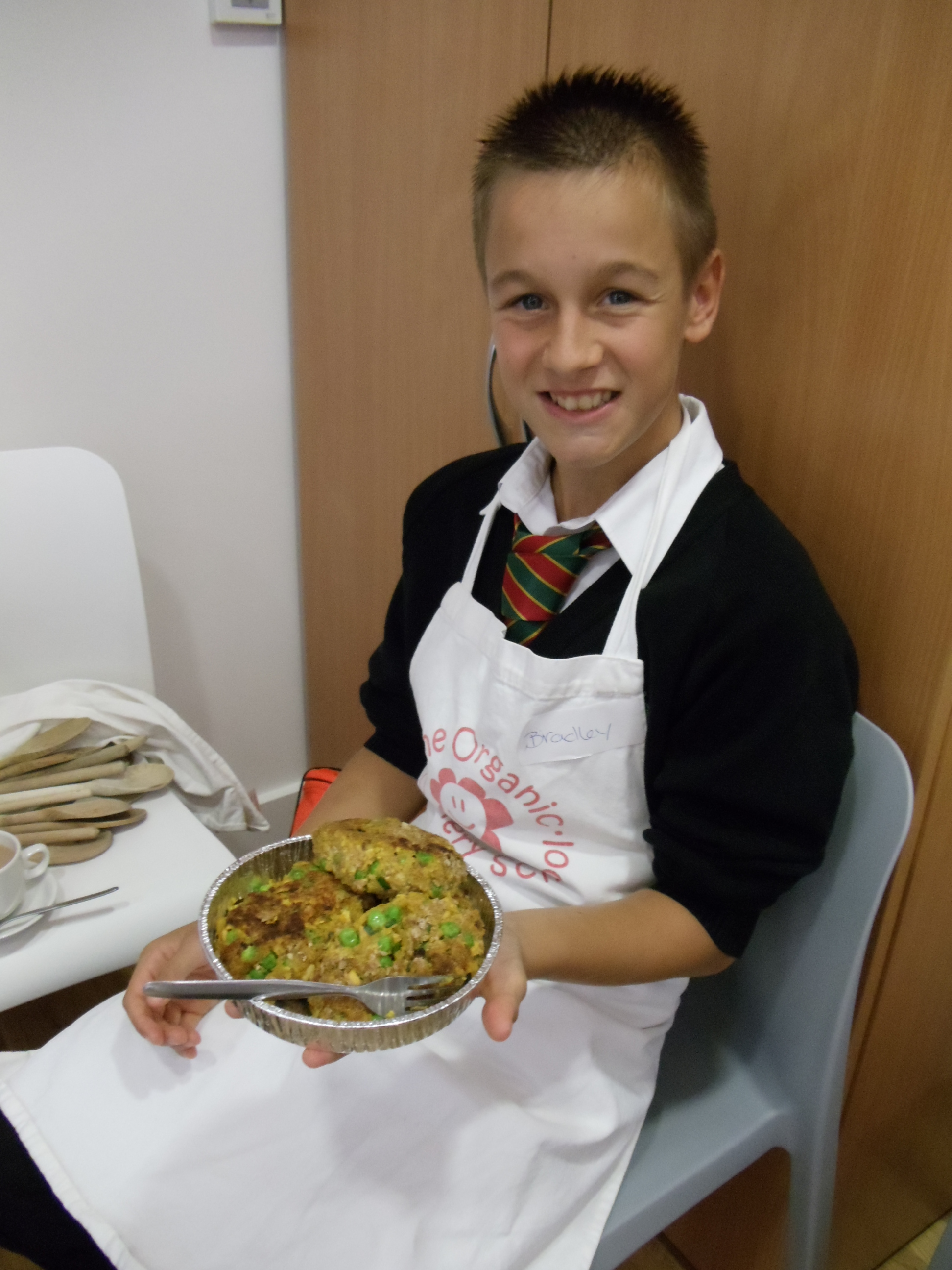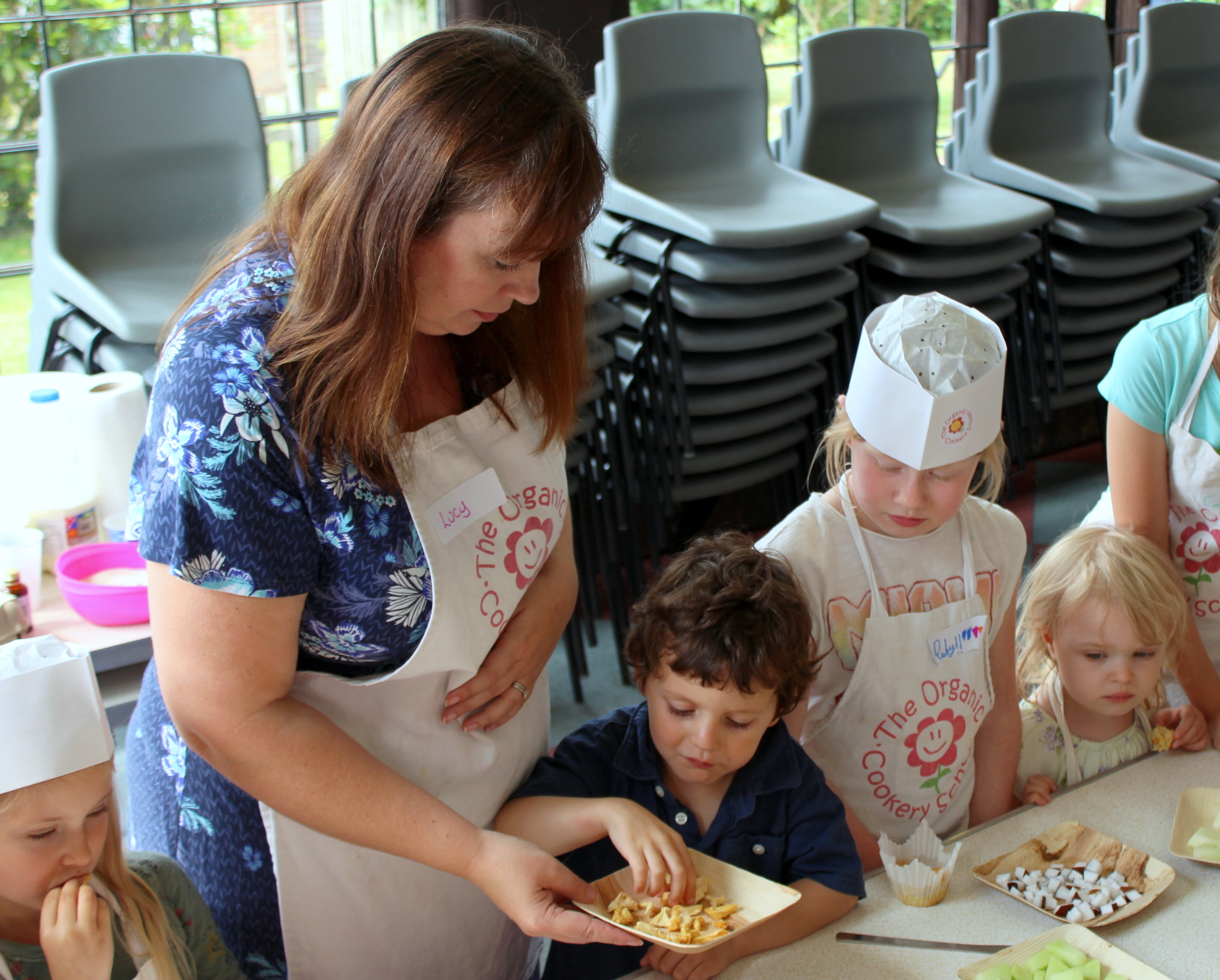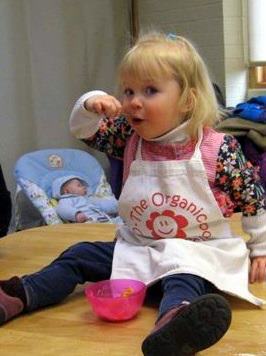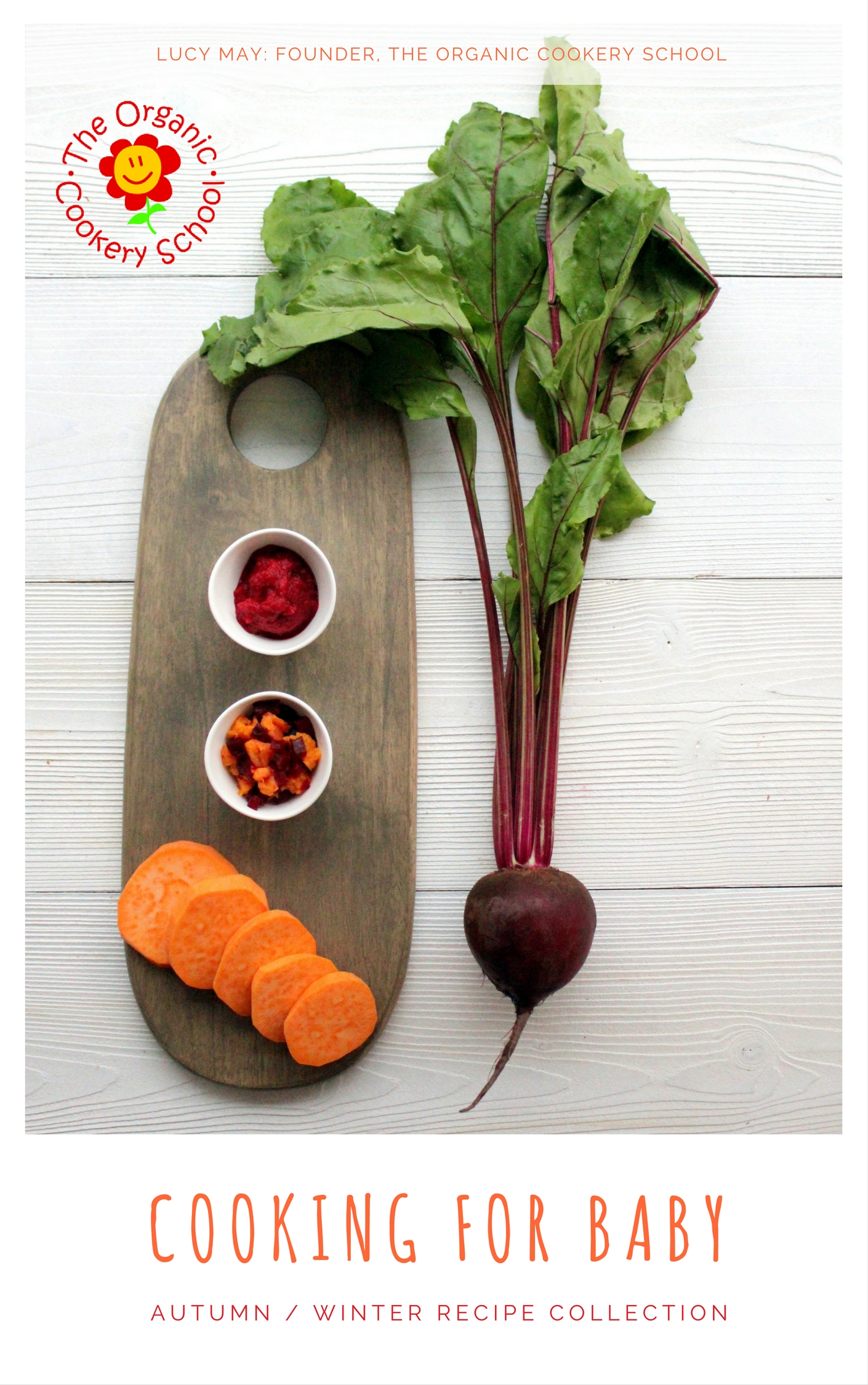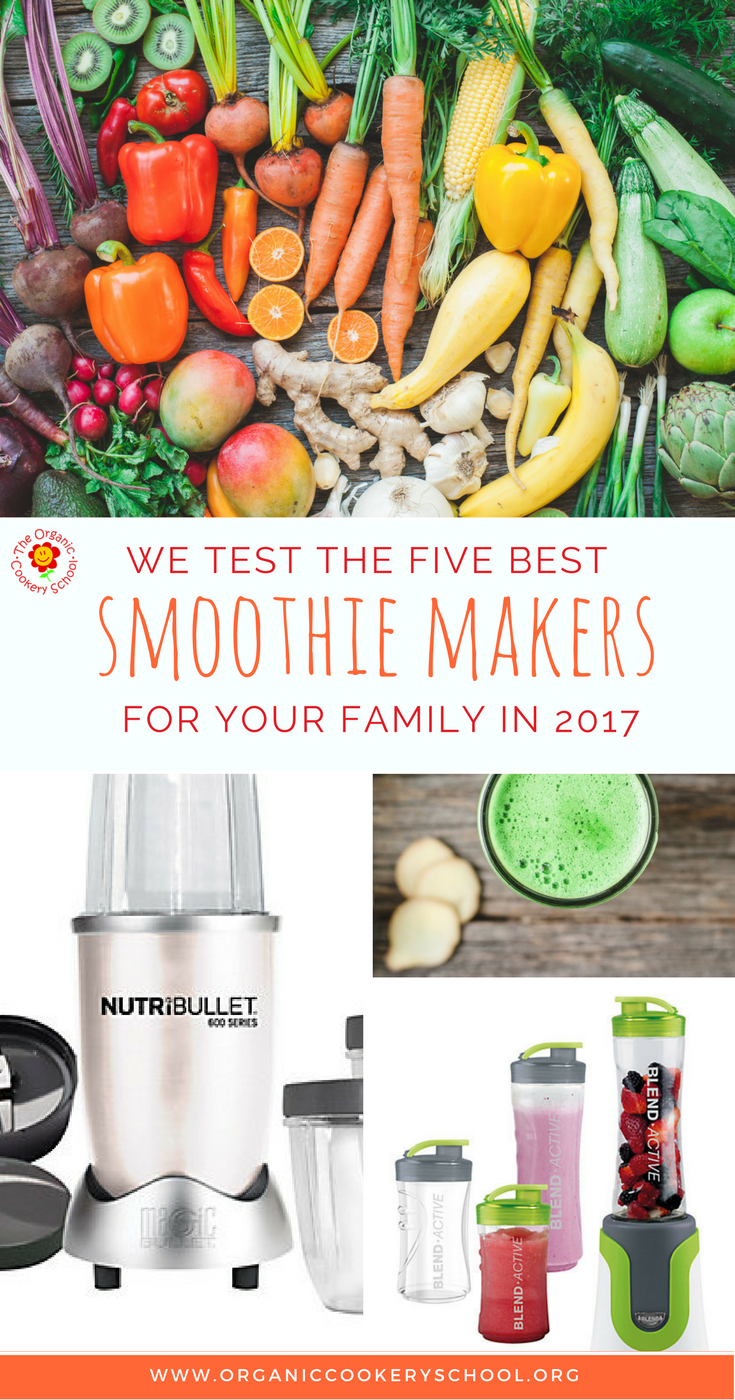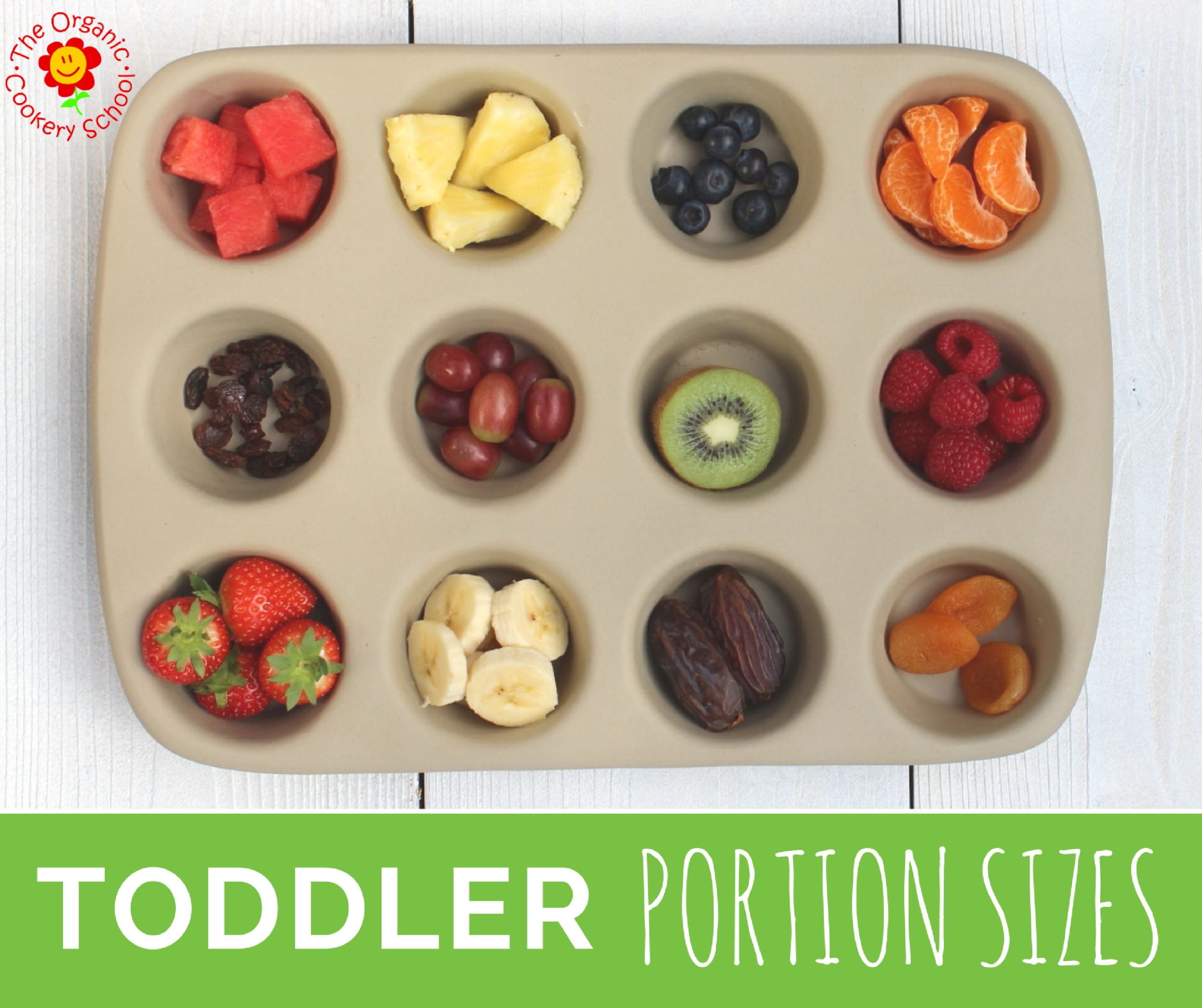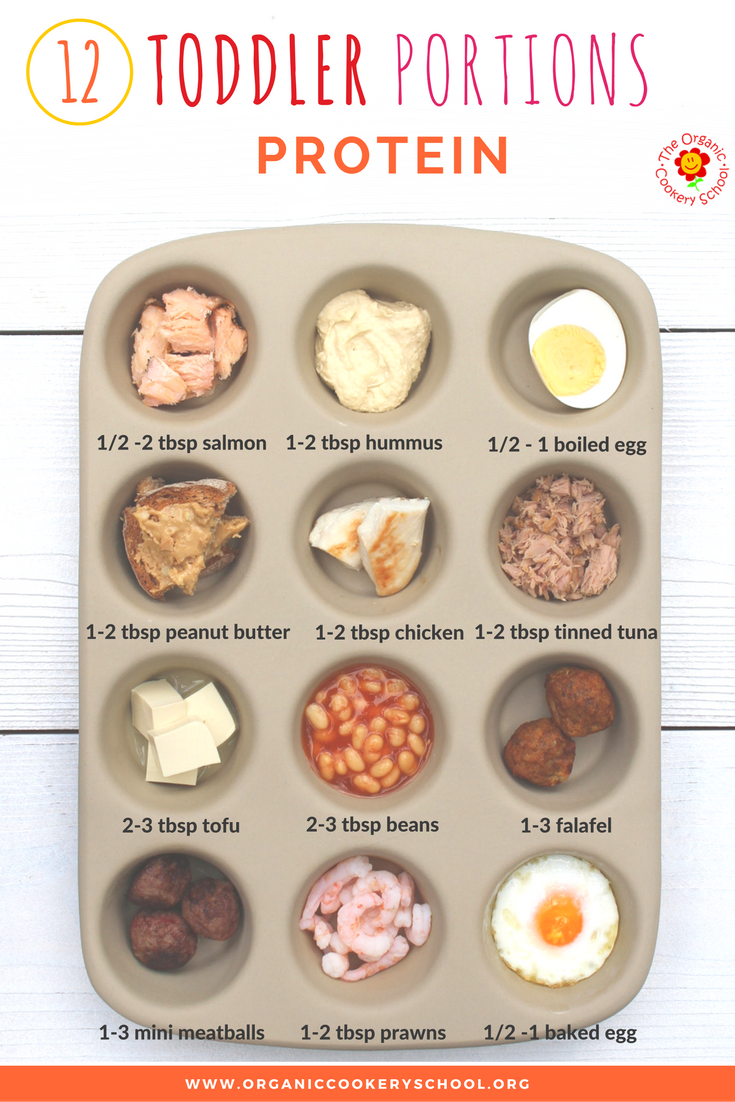Twenty kitchen skills every teen needs to know before they leave for University
Lentil Shepherd's Pie
Healthier Gingerbread Christmas Wreath
serves 12 or more
Healthier Christmas Gingerbread! Can it be? Well, yes if you count swapping wholemeal flour for white, less golden syrup and the inclusion of nutrient-rich black-strap molasses, containing iron, folate, magnesium and calcium. This recipe features some of our favourite British organic brands - Steenbergs (for organic ginger and cinnamon), Doves Farm (for flour and bicarb) , Meridian Foods (for Black Strap Molasses), and Rachel’s Organic (for fabulous butter).
Ask the expert - we talk to Abby Ixer, RD, about teen diet and stress
Welcome to the first in a two part blog series, focusing on teen diet. We spoke to Abby Ixer, Registered Dietitian, about whether food can positively impact stress, sleep and energy issues in young people, whether teens should take supplements, and common teen nutrient deficiencies.
We hope you enjoy Abby’s article.
Foodwise, the teenage years can be some of the most challenging for children and their parents.
For parents and teens, it’s a time of great change – teens strive for independence to choose their own diet yet often make unhealthy food choices when given freedom of choice, and like many adults, can be influenced by marketing and the choices of their peers.
It can be challenging for a parent to promote independence whilst still ensuring that nutritional needs are met. Many parents struggle to encourage their children to maintain a healthy diet when they reach adolescence – for example there may be healthy options on the school lunch menu but that doesn’t mean that they will be chosen by their kids!
Many issues arise during adolescent years including body image, exam stress, sleep disturbances and difficulty with concentration as the teenage body undergoes numerous hormonal, physical and emotional changes.
Stress and other issues
The British Nutrition Foundation states that eating a healthy, balanced diet and staying active are not only good for overall health, but could also help to cope in times of stress. With exams and peer pressure at the forefront, the teenage years can be a stressful time which sees many children reaching for unhealthy foods for comfort and convenience. Many teenagers are unaware of the impact of an unhealthy diet on their overall wellbeing – not just their weight but also their sleep quality, ability to concentrate, their skin and their mental health.
So, what is a healthy balanced diet for teens?
General healthy eating tips for teenagers:
- Have regular meals – avoid skipping breakfast. Around a third of young people regularly avoid having breakfast on school days. It is a myth that skipping breakfast can aid weight loss, as many teenagers believe. Starting the day with a balanced meal reduces the desire to snack on unhealthy foods later on and maintains energy levels throughout the morning.
- Include a variety of food groups for balance including fruits and vegetables, starchy foods, protein and dairy or alternatives. Encourage teens to get involved with food shopping and cooking. If they have some input into their meals they may be more inclined to try a variety of foods.
- Eat plenty of fruits and vegetables. On average, only 7-10% of children aged 11-18 years consume the recommended five portions of fruits and vegetables daily, meaning that the majority of young people are missing out on vital nutrients.
- Choose healthier snacks – sugary snacks may result in a sugar high and subsequent fatigue later on. Consumption of free sugars should not exceed 5% of a teenager’s total energy intake daily. Free sugars include all sugars added by manufacturers as well as those naturally present in honey, syrups and unsweetened fruit juices. The most recent result from the National Diet and Nutrition Survey (published in April 2018) show that young people’s intake of sugar is way above the recommended levels and only 5% of 11-18 year olds meet this recommendation.
- Drink plenty of fluid to stay hydrated – aim for 6-8 glasses a day (or 1.5-2 litres). Water is the healthiest choice, making up 60-70% if the human body. It is best to avoid too many fizzy drinks and fruit juices due to the high sugar content. Fruit juices should be limited to no more than 150mls daily. Also be wary of smoothies as these can also be high in sugar. Data shows that the main source of sugar in a teenager’s diet comes from non-alcoholic drinks. This is especially important for active teens who participate in a lot of sport. Healthy drinks include water, milk, sugar free squash or herbal tea.
The three vitamins and minerals that your teenage child may need more of:
The main current healthy eating advice for teenagers is based on the Eatwell Guide (see link in references below). However, there are specific micronutrients that are particularly important for teenagers. These include:
iron:
Iron is essential for building red blood cells to transport oxygen around the body to use for energy. Teenage requirements for iron are higher than any other age group, as their bodies are still growing and preparing them for adulthood. Teenage girls need more than boys (14.8mg for girls compared to 11.3mg for boys). Survey data shows that around 48% of 11-18 year old girls in the UK consume below the recommended amount of iron. Iron deficiency (known as anaemia) can lead to fatigue, lethargy and weakness. Iron rich foods include red meat, green leafy vegetables, dried fruit, nuts, beans, wholegrains and fortified breakfast cereals. Vitamin C helps us to absorb iron, so including fruits or vegetables with each meal will increase the absorption.
vitamin d
Vitamin D is needed to aid the absorption of calcium – essential for the maintenance of healthy bones and teeth. Vitamin D is produced mostly in the skin in response to sunlight, but can also be found in small amounts in oily fish, red meat, eggs and fortified breakfast cereals.
calcium:
Calcium is required to maintain healthy bones and teeth. The majority of bone mass is built in childhood, and by the time our children reach the end of their teenage years, their bones have already almost reached their maximum strength and density. Therefore it is crucial to ensure optimal nutrition during the teenage years in order to ensure healthy bones as adults. Teenagers need more calcium than any other age group; with males needing 1000mg daily and females needing 800mg daily (the average adult needs just 700mg). Calcium can be found in dairy products (milk, cheese, and yoghurt), tinned fish, green leafy vegetables, nuts and soya products (such as tofu).
The following table lists recommended sources of iron, vitamin D and calcium in various common foods.
Does my teenager need a supplement?
According to NHS guidance, if a teenager is eating a balanced diet, they generally shouldn’t need any supplements unless there is a known deficiency.
The exception is vitamin D, as the body is unable to produce vitamin D all year round because sunlight exposure is reduced during the winter months. Generally, the body should produce enough during the summer to maintain good reserves during the colder part of the year. In today’s society, teenagers are spending more time indoors and therefore receiving less sun exposure during the summer and as a result, the incidence of deficiency is increasing. In recent years, low vitamin D status has been observed in 22% of 11-18 year olds across the year as a whole, with an increase in deficiency being observed during the winter months. As there are very few dietary sources of vitamin D, the new government guidance states that teenagers should consider taking a daily 10µg vitamin D supplement during autumn and winter.
meal ideas for optimum teen nutrition:
Whilst we all understand the concept of a balanced diet, it’s easy to get stuck in a rut of the same old breakfasts, lunches and dinners. We asked Abby for some quick meal ideas which to help fuel your teen through the day, and minimise energy slumps.
breakfast
Porridge made with milk (or a dairy free alternative). Try one of these tasty variations:
o ‘Crunch’ porridge: small handful of dried fruit and mixed seeds (try dried apricots and pumpkin or sunflower seeds).
o ‘Apple pie’: grated apple, a small handful of flaked almonds and a pinch of cinnamon.
o ‘Banana bread’: mashed banana, a small handful of pecan buts and a pinch of nutmeg.
o ‘Summer berry’: cooked apple and berry compote
o ‘Carrot cake’: grated carrot, a small handful of walnuts and a pinch of cinnamon.
Wholegrain cereal such as shredded wheat, bran flakes, Special K or Weetabix).
Wholemeal/seeded toast with one of the following:
o Peanut butter
o Marmite
o 2 poached or scrambled eggs
o ½ tin of baked beans
Also include a piece of fruit or 150ml of fruit juice for extra vitamin C and a calcium rich food (e.g. low fat yoghurt, glass of milk, etc.)
lunch:
Jacket potato, baked beans, cheese, salad
Sandwich with various fillings:
o Tuna and cucumber/sweetcorn/green pepper.
o Chicken/turkey, lettuce and tomato.
o Smoked salmon, low fat cream cheese and cucumber.
o Egg and cress.
o Hummous and red pepper.
o Peanut butter and banans
Tinned sardines on wholemeal toast.
Lentil and vegetable soup.
Omelette – add vegetables for a vitamin and fibre boost.
Also serve with a piece of fruit and a calcium rich food as before.
dinner:
Bean chilli or stew served with brown rice/couscous and vegetables.
Spaghetti Bolognese – made with lean beef mince and served with whole-wheat pasta and salad.
Serving of meat/fish/tofu with boiled new potatoes (skins on) and vegetables.
Try to ensure that main meals contain a balance of carbohydrates, protein and vegetables.
snacks:
A handful of mixed nuts and dried fruit.
Low fat Greek yoghurt with fresh fruit.
Carrot/cucumber/pepper sticks with hummous.
Small wholemeal pitta bread with hummous or tahini (sesame seed dip).
Sliced apple with 1 teaspoon of peanut butter.
Oatcakes with low fat cream cheese.
30g piece of cheese and a handful of cherry tomatoes.
Plain popcorn – add a sprinkle or chilli powder or cinnamon for extra flavour.
Glass of milk (or dairy free alternative).
For a sweet treat, try homemade frozen yoghurt - mix together low fat Greek yoghurt with mashed banana and chopped mixed berries. Freeze until solid, stirring occasionally.
Join us for part two (published 19th nov 2018), when we discuss teenagers and caffeine, sleep, memory and stress.
And sign up below for a live teenage diet Q & A with Abby, and Organic Cookery School founder, Lucy, on 25th November 2018 (limited places)
References and further reading:
https://www.nhs.uk/live-well/eat-well/healthy-eating-for-teens/
https://www.bda.uk.com/foodfacts/Diet_Depression.pdf
https://www.bda.uk.com/foodfacts/PackedLunches.pdf
https://www.gov.uk/government/publications/the-eatwell-guide
https://www.gosh.nhs.uk/teenagers/staying-healthy/healthy-eating
https://www.nutrition.org.uk/healthyliving/lifestages/teenagers.html
http://www.ipswichandeastsuffolkccg.nhs.uk/Yourhealth/Youthhealth/Healthyeating.aspx
https://www.nutrition.org.uk/nutritionscience/nutrients-food-and-ingredients/liquids.html?start=1
Solutions for baby CMPA - tips from parents on how to get your baby seen and treated as soon as possible.
CMPA affects between 1.9 – 4.9% of young children and is the leading cause of food allergy in infants and young children younger than 3 years (GP INFANT FEEDING NETWORK), with many growing out of their symptoms by the time they are toddlers. However the journey from diagnosis to treatment (and solving baby pain) can be long and convoluted.
Many mums start with their Health Visitor or GP, and have to return time and time again to be (eventually) referred to a paediatrian, and dietitian.
With such high occurences, we thought it valuable to talk to parents who've been through this, and (just about) escaped intact - many of whom have gone on to blog about their experiences and offer support to other families on this journey.
The aim of this article is to illustrate the recurring point that you know your baby best - and if they have any symptoms associated with CMPA, you have a right to expect these symptoms to be addressed as soon as possible.
We'll be exploring this issue in further depth in our upcoming dietitian-led parent workshop (online on 7th June, book a place here), when Nishti from Nishti's Choice will offer her advice on self-diagnosis tools and resources which will help you evidence your baby's problems to health care professional and get support as soon as possible.
Resources include:
Nishti’s Choice - My Baby’s Assessment (to self diagnose)
Nishti’s choice - My Baby’s Symptom Tracker (to show to your healthcare professional)
The Milk Ladder Symptom Diary (to help you through the milk ladder)
CMPA Food Fact Sheet (to help you check food labels)
Alternative Products for the Dairy Free Diet (to help you pan your meals, especially if breastfeeding)
Book your place on the parent workshop here
But now it's time to hear from the ladies who've been through this.
Emma's story, (from Free From Farmhouse).
It took 9 months to get my son officially diagnosed, despite terrible eczema, frequent doctors visits, a trip to A&E and reactions during weaning. With my daughter I knew from day one but I still had to fight for a diagnosis and dairy free formula. Unfortunately it's such a common story. I interviewed lots of experts for my book about living with allergies, which comes out next year with Allergy UK, and they all know the issues but still have a hard time getting GPs to recognise symptoms.
Nina's story, (from Non-Ige Baby).
It took (sic) around 28 days for my youngest - he couldn’t lay flat for vomiting, his skin was awful and at the point when he struggled to breathe even when bolt upright he was diagnosed. My eldest is still waiting and she’s nearly 3. Luckily she’s able to drink oat milk and is willing to take supplements! I don’t think she’ll ever get any help if I’m honest- it was a battle with my son when the problem was plain as day to everyone who saw him.
Becky's story (from Incredible Isla)
We (sic) sSelf diagnosed after 5 months. Immediate dietitian referral who has been amazing in helping us through multiple severe food allergies .
Laura's story (from Five Little Doves)
(It took) 12 months with my first daughter and 9 months with my second. My second daughter was in and out of hospital for 9 months before they finally took it seriously and ended up really unwell. I wish I had pushed harder.
Sarah's story (from Mummy Cat Notes)
It took six months to finally get a diagnoses with my son, none of the doctors believed me and I had to change his milk that was recommended to me by a friend to show that milk was effecting him and they finally accepted it. it’s shocking how it’s one of the most common childhood allergies but no one believes it.
Laura's story (from Edinburgh With Kids)
It took (sic) 14 months here. After an initial hospital visit at 3 months due to a lot of vomit, we were in and out of doctors visits as she went from vomiting and weight loss to chronic constipation, finally got referred to allergies at about 9 month but another 5 to actually be seen.
Zoe's story (from Mummy and Liss).
It took months for me to get a diagnosis for my daughter, I knew it was more than 'just colic' and I was right. In regards to speeding up the process of a referral.. just keep on at them, it sounds bad but do not back down or you will be turned away.. hang in there & just know that you're not an annoyance, you're doing what's best for your baby
Lauren's story, (from Dilan and Me).
It took several months here. My little boy was sick all the time (actual puddles of sick everywhere we went), then his weight gain flat-lined. He fell below the second centile and was diagnosed as “failure to thrive” but no one knew why. I began to suspect CMPA as a friend's baby just had that diagnosis. At 6m we started BLW and he had some chicken cooked in a cream sauce, then immediately came out in hives everywhere it had touched. Luckily he hadn’t ingested any. We both cut out dairy and soya immediately (I was Breastfeeding) and his sickness stopped, and his weight shot up. So basically it was completely diagnosed by myself with very little healthcare professional support. I was dairy and soya free for 2 years until he self weaned, and he’s very very slowly progressing up the milk ladders now at 4.5.
I advise mums to research as much as they can for themselves, and to read the MAP guidelines which health care professionals should be following. Unfortunately you have to be quite pushy and really advocate for your child to get the support you/they need, but I find showing a GP the guidelines in black and white tends to get them to act and actually refer you to wherever you need. For breastfeeding mums in particular a dietician referral is recommended because it’s important someone is monitoring their diet too for all the correct vitamins and nutrients x
Lauren has created a really helpful Dairy and Soya Free Treats list (perfect if you are breastfeeding).
Samantha's story (from Serenely Sam)
It took around 4 months for my daughter to be diagnosed. I know thats a lot faster than some but it was only thanks to my amazing health visitor. My GP was very dismissive and wouldn't listen to any of my concerns about my daughter's symptoms. She was being sick all day, explosive nappies all day, she was writhing in pain during every feed, had blood coming from her bum on a few occasions, and also had reflux. The GP refused to look passed the reflux, even when she knew that CMPA ran in my family! My Health visitor's hands were tied really as I had to go through my GP but when the GP wouldnt help, and my daughter was so ill, she referred us to a dietician herself as an emergency case. My daughter was prescribed Similac formula which immediately helped her.
Nathalie's story (from The Intolerant Gourmand)
My son had a severe allergic reaction and was rushed to A&E at 8 weeks old. But it took until he was 16 months old, and 3 further severe allergic reactions where we almost lost him, before he was finally diagnosed with multiple severe allergies, including CMPA!
I now work with a number of clients creating allergy safe recipes, lecturing with leading Paed Consultants at various conferences across Europe to help them better understand the impact of diagnosis and the time taken for diagnosis, and coach parents and children to help them to live positively with allergies.
Don't forget to join us on 7th June 2018, for our live parent/dietitian workshop. Tickets cost £10 and are limited in number.
Thank you to all the bloggers who shared their experiences in this post. Please check out their websites and let them know we sent you :)
Ask the expert - we talk to an oral health expert about the best ways to look after your family’s teeth and avoid child tooth decay and extractions.
The dental health of children, including issues such as tooth extractions and decay are currently making headlines for all the wrong reasons. Numbers of child tooth extractions are up, causing what must be for many children, a great deal of unnecessary stress and discomfort, as well as putting additional pressure on the NHS.
Hospitals extracted multiple teeth from children and teenagers in England a total of 42,911 times – 170 a day – in 2016-17, according to statistics obtained by the Local Government Association
As a parent, and someone who spent a lot of time in the dentist’s chair from the age of ten (due to two broken front teeth rather than cavities), this worries me deeply not only because I know just how distressing and painful dental work is, but also because for most, it is avoidable.
I’d like to think I’m a well informed parent, but these statistics make me wonder just what’s missing in our parenting education, for this problem to be growing so dramatically.
Yes, we need to give our children less sugary foods.
Yes, supermarkets need to stop promoting sugary food.
But as well as dietary choices, how much do parents really know about the best ways to care for their children’s teeth?
As a parent educator, I also know it’s something that other parents lack confidence in too, especially those who have babies starting solids or preschoolers.
Is there enough support and information to support parents right from when a baby starts solids, through to when a child is left to brush their teeth independently?
With this in mind, I decided it was time put some of our parent questions to an expert, and I am very grateful to Samantha Glover, Dental Public Health Program Manager at Public Health England, for taking part in the following Q and A. All questions were submitted by The Organic Cookery School’s Parent Focus Group.
This first question came from Isabel, who like many parents often gives homemade smoothies as a way to boost her children’s intake of fruit and veg (particularly spinach, which as we all know becomes infinitely more acceptable to a child blitzed up with fruit)
Q: Are smoothies really bad? Are they better if drunk through a straw?
A: It is so much better to eat whole fruits; when you blitz the smoothie you release the sugars which can damage your teeth.
These can also be quite acid, leading to enamel erosion. If you are going to have a smoothie or any drink that is not water or milk, drink it with a meal and over a short period of time. The worst thing you can do is sip these drinks throughout the day as it means the damage is continual rather than being in one hit.
If straws reduce the amount of time a sugary drink is in contact with teeth, then yes, but this is reduced if being sipped over a long period.
Find out more on this topic here
Amy wanted to know whether it’s better to offer smoothies at a particular time of day.
Q: Is it better to give a smoothie in the morning (because you can brush teeth after)
A: Give it with a meal and stick to water or milk in between meals. Do not brush your teeth for 45mins after you have eaten or drank anything. Once you eat or drink the sugars and acids in the food form an acid which attacks the enamel. Over the next 45 mins your saliva with help neutralise this acid environment and bring the PH back to a neutral level. At this point it is safe to brush again. If you want to help you teeth drink some water after eating or drinking.
Find out more on this topic here:
Lianne has a toddler and school-aged child and wanted to know how important it is to use toothpaste targeted at different age groups.
Q: Do I really need different toothpastes for all the different ages? Does it matter if my two year old and 8 year old have the same one?
A: The difference in ages for toothpaste is the fluoride content. Children from 4 years old who are developing their adult teeth benefit from the higher dose of fluoride (1450ppm). This is the same for all children older than this. With children 4 and above use a pea sized blob. Children under this age use just a smear. Rub the toothpaste in to the toothbrush so the child doesn’t just suck the paste off the brush and swallow it.
Find out more on this topic here:
Lianne also asked about mouthwashes targeted at children.
Q: Do my children need to use children’s mouthwash?
A: Children should not need to use a mouthwash unless recommended by their dental professional. After brushing the teeth for two minutes with a fluoride toothpaste spit out the bubbles but do not rinse. You want that fluoride to soak in to the enamel to help keep it strong. If you rinse with water or mouthwash you will wash all of this away. The child’s saliva will slowly wash this away once it has done its job.
Monika wondered about whether toothbrushes need cleaning.
Q: Should I clean my child’s toothbrush (eg sterilise it)?
A: No, toothbrushes should be replaced regularly. Every three months is recommended but if yor child has been sick or been unwell replace the toothbrush before. Use a toothbrush cover once the brush is dry or keep them in a cupboard. Do not use each other’s brushes. It is always best to replace than try and sterilise or disinfect a brush. Just rinse the bristles well after use and leave to try.
Find out more on this topic here:
Inga wondered about the effects of dried fruit on teeth, especially as a playtime snack or at lunch.
Q: Can I give my children dried fruit snacks during the day?
A: Dried fruits such as raisins are very concentrated sugar and stick so they stay on the tooth surface for a long time. Try to limit snacks to two a day (100cals) and drink plenty of water after a snack to help clean the mouth.
Find out more on this topic here:
Ines posed a great question about foods that might help neutralise sugar acid during the day.
Q: Does cheese (or any other food) neutralise sugar acid?
A: Yes to a degree. Low acid and sugar snacks include rice cakes, cheese and milk. These can be a good addition to the diet and water and milk are a good option after something acidic or with sugar.
Find out more on this topic here:
Chloe, one of our ‘Cooking for Baby’ mums asked about babies and teething.
Q: Is it ok to let my baby chew her toothbrush when teething?
A: Teething rings are better for long term chewing but introducing your baby to a toothbrush whilst they are teething is a good idea, they can get used to the feeling of the bristles so this feels more familiar when you start to brush the teeth. Children should be supervised to brush up to the age of 7.
Sam wondered whether her son’s current dental routine was linked to recurrent bad breath.
Q: My child has bad breath, but we clean teeth regularly, are we doing something wrong?
A: Bad breath can be a sign of a throat or stomach problem. Take the child to check that the teeth and gums are clean and healthy. If this is the case then check with your GP. Often when a child has a throat infection or stomach problem it can cause a bad taste and smell in the mouth.
We also asked about rinsing with water.
Q: Should my child rinse with water or leave some toothpaste in their mouth after brushing?
A: Spit don’t rinse (see above)
And whether Samantha had any specific advice on sippy cups/giving up bottles.
A: Children should be encouraged to drink from a free flowing cup from 6 months. This will help with keeping the teeth healthy as the liquid is not pooling in the mouth and is in contact with the teeth for a shorter period of time. It will also help with speech development as different muscles are used to drink from a cup.
Find out more on this topic here:
References and further reading:
http://www.child-smile.org.uk/parents-and-carers/birth-to-3-years-old/babys-first-drink.aspx
https://www.dentalhealth.org/tell-me-about/topic/childrens-teeth/dental-erosion
https://www.nhs.uk/change4life#MsVPe9pEpZt601xt.97
https://www.dentalhealth.org/tell-me-about/topic/childrens-teeth/dental-erosion
We also asked Samantha for her favourite children’s books to encourage children to brush their teeth and allay worry about going to the dentist. Read about her recommendations here
Poop problems – we talk to a registered dietitian about how to help your constipated child & when to worry about diarrhoea
Digestive issues in Children – a guest article by by Abby Ixer, RD
Your child’s digestive system is a complex system that turns food into the energy their body needs to develop and grow. Effective digestion is key to good health. Throughout a child’s life, the gut is exposed to outside factors which may cause unpleasant side effects, such as diarrhoea or constipation. These can often be worrying for parents, but are often harmless and can be treated effectively. This article aims to summarise the main things to consider if your child is suffering with digestive problems and how to treat some of the more common ones.
Constipation
Constipation is surprisingly common in children, with roughly one third suffering at any one time. Constipation can usually be managed at home through diet and lifestyle changes.
How to spot signs of constipation?
Your child may be constipated if:
- They don’t pass stools more than three times a week.
- Their stools are often large or very firm.
- Their stools look like ‘rabbit droppings’ or small pellets.
- They suffer from loss of appetite.
- They lack energy.
- They suffer stomach pain or discomfort.
- They seem irritable or generally unhappy.
How to prevent and treat constipation:
If you suspect that your child might be suffering with constipation, it is always best to take them to your family doctor to rule out anything more serious. It is essential to get advice early, as the longer it goes on for the more difficult it is for bowel habits to return to normal. Diet and lifestyle changes are usually the first treatment for constipation, but it might take a while for these changes have a significant effect, so it is important to be patient.
Ensure adequate fluid intake. Encourage regular sips of water throughout the day.
- Ensure that your child is given a varied diet to include plenty of fibre. Fibre rich foods include fruits and vegetables, wholegrain products such as bread and cereals, oats, seeds, beans and pulses. It is best to introduce fibre slowly and in small quantities to avoid nasty gut side effects. Be aware that wholegrain foods are not suitable for children under two years of age, as they tend to fill them up before they have consumed enough calories. Avoid giving children under five solely wholegrain products alone, so include a mixture of different types. For young children, try giving pureed apple as a dessert or chopped strawberries as a snack.
- Avoid over feeding. Children who are fed too much are more likely to suffer with constipation, especially if they don’t get enough fluid. Ensure portion sizes are appropriate for their age. For more information about portion sizes for child, see the ‘Useful Links’ section.
- Encourage your child to take part in gentle exercise and remain active.
- Try to remain calm and reassuring. Avoid creating a stressful toilet environment and give them enough time so that your child doesn’t feel anxious about going to the toilet.
What about babies?
For babies who haven’t started to eat solid foods, give them extra water in between their normal feeds. If your baby is eating solid foods, make sure they drink plenty of water or diluted fruit juice in between meals. Try to include small amounts of fruit as well. This can be chopped or pureed depending on their stage of weaning. To help encourage bowel movements, you can also try gently massaging their stomach.
When should I be concerned?
If you are concerned, it is always advised to speak to a GP for further guidance. If you notice any of the following, you should see a GP urgently.
- Bleeding from the back passage or in stools.
- Persistent tiredness.
- Unexplained weight loss.
- Other gut symptoms such as intermittent diarrhoea or vomiting.
Diarrhoea
Diarrhoea can be unpleasant and uncomfortable for children, although in most cases there is nothing to worry about. It usually affects most children at some stage of life and can usually be treated at home without the need for medical intervention.
How to prevent and treat diarrhoea?
- Ensure adequate fluid intake. Diarrhoea can lead to dehydration, so it is essential to replace any lost fluid as soon as possible. It is often more effective to give smaller amounts of fluid more frequently. Avoid fruit juice or fizzy drinks as these can often make symptoms worse. Encourage your child to take regular sips of water throughout the day.
- If your child is dehydrated, consider giving them an oral rehydration solution. This can help to replace lost fluid and nutrients. It is usually advised to give this to your child after each bout of diarrhoea. Speak to a GP or pharmacist before using these to ensure the correct dose is given.
- Make sure they get plenty of rest.
- Anti-diarrhoea medications are not usually necessary and most types are not suitable for children.
When should I be concerned?
Usually, diarrhoea will clear up by itself within five to seven days. However, if your child has any of the following, you should speak to a GP straight away.
- More than six episodes of diarrhoea in the past 24 hours.
- Persistent diarrhoea lasting more than seven days.
- Symptoms of dehydration. These include dizziness, dry mouth, cold or blotchy hands, dark coloured urine or low urine output.
- Blood in stools or from the back passage.
- Very watery stools.
- Severe stomach pains.
Tips for children with a stomach bug
- Encourage your child to start eating solid food as soon as they are able to. Start with small amounts of plain food, such as bread, soup, pasta or potato. For babies, continue to feed as normal.
- The priority for a child with a stomach bug is to prevent dehydration, so avoid giving them any solid food until they have drunk enough fluids. Once they stop showing signs of dehydration, they can resume a normal diet again. If they do not feel like eating, continue to give them plenty of fluids and wait until their appetite returns.
What about probiotics?
Probiotics are live bacteria, usually described as ‘good’ or ‘friendly’ bacteria. They are often added to yoghurts and are thought to help restore the natural balance of bacteria in the gut. Probiotics may be beneficial in some cases, for example there is fairly good research to support the use of probiotics for children whilst taking antibiotics. Antibiotics can reduce the amount of friendly bacteria in the gut, causing adverse side effects including diarrhoea and bloating. Taking probiotics may help to replace the bacteria lost as a result of antibiotic use. More research is needed to support the claimed benefits of probiotics, as it appears that people respond differently to different strains of bacteria and the evidence is not strong enough yet to recommend them as a treatment.
Summary: general tips for good digestive health
- Ensure adequate fibre intake to prevent constipation. Try adding beans to soups or stews or give your child vegetables sticks with hummus as a snack. A great way of boosting fibre at breakfast is to mix a high fibre cereal with your child’s favourite, choose wholegrain options where possible and try to keep skins on potatoes.
- Eat plenty of fruits and vegetables. Aim for 5 portions a day, but always start small and build up gradually. As a general guide, one portion is roughly the size of your child’s fist. Try adding a small handful of dried fruit to porridge or add a few cherry tomatoes to their lunchbox. For older children, keep pre-prepared fruits and vegetables in the fridge, such as pre-chopped fruit salad or chopped celery for a snack. For fussy eaters, hide chopped vegetables in pasta dishes. The Change4Lfie website provides other useful tips for boosting fruit and vegetable intake (link below).
- Ensure adequate fluid intake. Water is best, but diluted sugar free squash is also an option.
- Avoid caffeinated drinks. Caffeine can have a laxative effect, so avoid giving to your child in large amounts. The obvious sources are tea and coffee, but also be aware that fizzy drinks often contain large amounts of caffeine.
- Ensure that your child eats regular meals and encourage them to eat slowly at meal times to avoid swallowing excess air, which can cause gas and bloating.
- Give your child small portions to prevent overeating, which can cause bloating or wind.
- Avoid fatty, rich or spicy foods, as these can irritate the gut.
- Keep a food and symptom diary. This can help to identify trigger foods that may cause nasty gut symptoms.
- Follow general healthy eating guidelines. The Eatwell guide gives detailed advice about how to implement a healthy, balanced diet (see link below).
- Monitor any changes in your child’s stools and seek advice from a GP if there are any unusual changes, such as an unpleasant odour, blood, a greasy texture, pale colour or any change in consistency or frequency of bowel movements.
Useful Links and References
NHS - Eatwell Guide
http://www.nhs.uk/Livewell/Goodfood/Pages/the-eatwell-guide.aspx
Change4Life – Tips to reach 5 a day
http://www.nhs.uk/Change4Life/Pages/five-a-day.aspx
Start4Life
British Nutrition Foundation (Portion size guide for toddlers)
https://www.nutrition.org.uk/attachments/article/734/BNF%20Toddler%20Eatwell%20Leaflet_OL.pdf
NHS Choices
http://www.nhs.uk/pages/home.aspx
Caroline Walker Trust – Eating well for 1-4 year olds
https://www.cwt.org.uk/wp-content/uploads/2015/02/CHEW-1-4YearsPracticalGuide3rd-Edition.pdf
British Dietetic Association – Healthy Eating for Children Fact Sheet
https://www.bda.uk.com/foodfacts/healthyeatingchildren.pdf
British Dietetic Association – Fibre Fact Sheet
https://www.bda.uk.com/foodfacts/fibrefoodfactsheet.pdf
Additional resources:
Make sure your child can rest their feet flat on the floor or a step when they're using the potty or toilet, to get them in a good position for pooing. ERIC, The Children's Bowel & Bladder Charity's leaflet, Children’s Bowel Problems (PDF, 2.48Mb) shows this position.
Want to test your knowledge of family nutrition? Take our 10 question test to find out how much you know and how we can help you fill the gaps!
Organic Week at Lidl - the ten ingredients we're stocking up on this week
We love Lidl - they always stock a great range of organic and fairtrade goodies, and a couple of times a year they run their Organic Week promotions. This week is one of those weeks (running 3rd August to 9th August inclusive).
Here are out top ten storecupboard essentials to stock up on whilst on promotion.
Organic Grains:
Organic Bulgur Wheat (£1.99 for 500g)
Organic Spelt (£1.99 for 750g)
Organic Buckwheat (£1.99 for 500g)
Organic Amaranth (£1.99 for 500g)
There's also this very affordable muesli, which works brilliantly in flapjacks, homemade granola bars:
5) Organic Wholegrain Muesli (£2.19 for 500g)
Next up organic pasta at just 99p for 500g. (Check out their basic organic tomato pasta sauce too)
Followed by three storecupboard bargains:
Organic Extra Virgin Olive Oil (£2.99 for 500ml)
Organic Tomato Ketchup (£1.29 for 450ml)
Organic Coconut Oil (£3.99 for 500ml)
Add this to organic smoked salmon, tons of organic fruit and veg choices, eggs, milk, yogurt and more and you're sure to save a few pennies at Lidl this week.
What will you make?
BAKE IT OFF! Five ways to reduce exam (SATS) stress by Cooking with your Kids
It's SATS week for 10 and 11 year olds across the UK, and after months of practice tests at school, most Year 6 pupils are feeling pretty tense about this week. As a former primary school teacher, I'm feeling pretty aerated by the unnecessary pressure these tests put on our little ones (and they are still little!), so I've come up with some relaxing afterschool activities for my 11 year old. We've made slime, done cartwheels (her not me!), played on a giant piano in the garden, and next up it's cooking.
But why cooking? Well obviously I'm biased, but of all the downtime activities I can rustle up with little effort and expense, this hits a lot of positive buttons. And guarantees smiles (lots of them!)
Here are my five top tips:
Choose a recipe: planning the recipe together is an important stage - leaf through some cookery books or browse some blog posts/pinterest for easy, tested recipes which appeal. Ask them to make an ingredient list and read it out whilst you check which ingredients you already have/need to get in. This teaches your child about planning and prep and builds the excitement about the time you are going to spend cooking together. Result - #buildsexcitement - and give them something to look forward to.
Stress can inhibit appetite - which in turns affects performance and concentration. Baking something delicious together will relax your child and stimulate their appetite. I’d recommend a healthy failsafe muffin or batch of wholefood cookies (see examples below) - sneak in some veggies or dried fruit for added fibre (as stress can affect digestion too). Other great ingredients for exam time are oats, eggs, and seeds. Result - #feelingnourished
Set aside time - cooking together is quality time that can’t be rushed (please don’t rush it or you’ll defeat the object) and illustrates you want to spend time with them and you value their company. Result - #feelingvalued - another great stress buster
Cooking is social and, when shared, involves teamwork, taking turns and collaborating. Decide together who is doing what, and make sure they know which jobs they are solely responsible for (and if you veer towards control freakery, hold back and let them do it themselves!). Result - #feelingindependent - and elevating the importance of non academic skills
Cookery is a sensory, tactile and whole brain experience - and will help balance out the exhaustion many children feel during test week. They’ll use the left part of their brain following instructions, and weighing and measuring, the right for creative flourishes, and evaluating tastes, smells, textures and how the experience makes them feels. Result - #feelingbalanced
Try it out - even as an end of week treat.
I can’t wait to hear how you get on. I guarantee smiles and happier, relaxed kids!
Here are some recipe ideas to get you going.
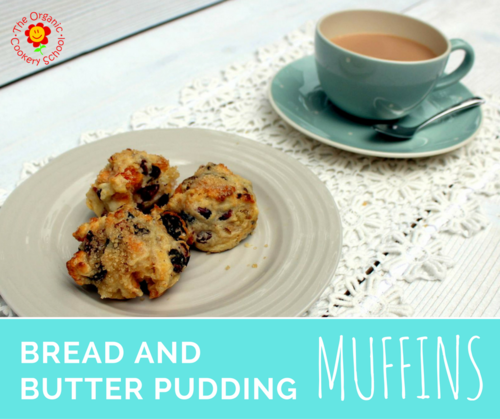

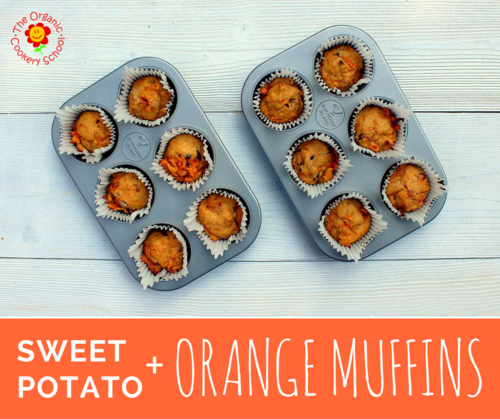
Any tips you'd like to share on how to relax and restore balance in your kids' lives? Comment below, I'd love to hear from you. And if you enjoyed this post, please share.
Three Chia Seed Pudding Recipes your baby will love
Chia seed recipes are everywhere - but are they suitable for your baby / toddler? And what does this weird frogspawn like superfood taste like?
Chia originates from Mexico, where the seeds were highly prized for medicinal and nutritional properties, and even used as currency.
Left to soak for a few hours, the small seeds absorb water, milk and other liquids and have little flavour of their own. The soaking process is particularly important for young children as it means they are easily digested.
Image courtesy of Dr Axe
They are nutritionally rich in omega 3 and protein as well as a mix of vitamins and minerals, making them a perfect healthy pudding for your little ones.
Over the next three weeks, we’ll be posting three of our favourite chai seed weaning recipes, which are also perfect for toddlers, older children and adults alike.
Note from Abby Ixer, Registered Dietitian.
Chia seeds are nutritious, but not uniquely as other seeds also provide the same benefits. They can add an interesting texture to recipes, so are useful for increasing variety in the diet. Try flax, hemp and other seeds too. Suitable from 6 months +
Our first featured recipe (which we bet will be a hit with parents too) is Chocolate Chia Pudding, a rich creamy chocolate pud, sweetened with prune and vanilla extract.
Next week, we'll be sharing a coconutty Pina Cola Chia Pudding and finally a summery Peach Melba Chia Pudding Recipe.
Does my baby need vitamin supplements?
An article for new and weaning parents, exploring whether babies and toddlers need vitamin and mineral supplements.
Many parents participating in our practical weaning course 'Cooking for baby' ask us about supplements for their babies. We asked Abby Ixer, RD for her advice on supplements for babies and toddlers.
Does my baby need vitamin supplements? If so, why?
Babies who are exclusively breastfed should be given a vitamin D supplement containing 8.5 to 10mcg of vitamin D every day from birth up until one year of age. This is because there are very few dietary sources of vitamin D and maternal levels may be low. Vitamin D is vital to enhance absorption of calcium for strong bones and teeth, so it is important to ensure adequate intake.
However, infants who are fed with at least 500ml formula every day do not need vitamin supplements. This is because formula is fortified with these vitamins so no additional supplementation is required.
What about when they start eating solid foods?
The Department of Health recommends that all children between the ages of six months to five years should be given daily vitamin supplements containing vitamins A, C and D, unless they are receiving more than 500ml of infant formula a day. It is essential to ensure that babies receive enough of these nutrients to aid healthy development. These vitamins have important functions in the body.
- Vitamin A – needed for healthy growth, vision and skin.
- Vitamin C – important for development of the immune system and maintenance of healthy tissue. Also helps to absorb iron.
- Vitamin D – essential to help absorption of calcium for healthy bones and teeth. This is particularly important as it is very difficult for young infants to consume enough vitamin D from dietary sources alone.
I have a toddler, should I give them supplements and if so for how long?
Although infants should be eating a varied diet by 12 months, it is important to continue to give vitamin supplements until they are five years old to ensure that they receive enough nutrients for growth and development. If a child does not eat much or is a fussy eater, they may struggle to get their recommended intakes of vitamins and minerals through food alone. Supplements should be used in addition to a balanced diet and are by no means a way of replacing the nutrients acquired through food.
Are some brands of supplement better than others? What should I be looking for?
Many supplements can be purchased over the counter, but it is always best to ask a pharmacist for advice on which is most suitable. Any vitamin supplements given to babies need to be labelled as 'suitable for children under one year of age'. Always follow the recommended dose and do not be tempted to give more than one supplement to your child. Some people are entitled to ‘Healthy Start vouchers and vitamins’, which provides free vitamin drops to children and is specifically designed to help low income families. Your health visitor can provide advice on vitamins and where to access them.
For more information about Healthy Start vitamins, please visit:
https://www.healthystart.nhs.uk/healthy-start-vouchers/healthy-start-vitamins/
For more ideas on meeting you baby's changing nutritional needs, check out our recipe books with full nutritional breakdown or sign up for one of our courses
References:
Healthy Start Vitamins
https://www.healthystart.nhs.uk/healthy-start-vouchers/healthy-start-vitamins/
Start4Life
https://www.nhs.uk/start4life/baby-foods
National Institute of Clinical Excellence – Maternal and Child Nutrition (2008)
Available at:
https://www.nice.org.uk/guidance/ph11/resources/maternal-and-child-nutrition-1996171502533
Five Best Smoothie Makers for your family in 2017
So, it’s January, and we are all full of new year’s resolutions for our family’s diet and wellbeing. If that includes eating more fresh fruit and veg, and you haven’t yet invested in one, you’re probably thinking of investing in a smoothie maker.
But which to try? Will a stick blender do just as good a job or do you need a full on magic bullet/seed and nut blitzing top-of-the-range model?
We put five of the most popular models to the test in The Organic Cookery School Kitchen.
The Nutribullet
Our review: The ubiquitous Nutribullet magic bullet has everything you need to make healthy and delicious smoothies. It’s easy to clean, handles frozen fruit and veg well and makes short work of blitzing nuts and seeds.
It comes with a selection of cups in two sizes and lids, plus a spare blade, all of which are dishwasher proof.
It’s also come down considerably in price over the last year making it a good investment buy for the future.
The Nutri Ninja
Our review: Another big price reduction means the Nutribullet’s main competitor is now closer to £50, rather than the original £100 launch price. It’s powerful motor handles nuts and frozen fruit/veg well. The basic model comes with just one blade,however, and less cups than the Nutribullet. A good contender though, making a delicious blended juice in seconds.
KMix Blender
This traditional freestanding blender comes in an eye popping range of colours. It'sa great blender and looks amazing in situ, but with a glass jug, we prefer the Nutribullet or Breville (see below) for ease of use and safety when making smoothies with kids.
Breville Blend Active Family Blender
Our review: What a great buy! Rather than cups it comes with three portable bottles (which you may or may not prefer) and at this price point it delivers great value for money. It doesn’t feel quite as weighty as The Nutribullet or Nutri Ninja, but it handles frozen fruit and veg well.
Braun Stick Blender
Our review: We thought it only fair to give our trusty stick blender a chance too, and tested the Braun MQ100 model. It's not the cheapest handblender there (there are models from around £5). The limitations are that you can’t blend frozen fruit or veg (so no frozen spinach, avocado or bananas for us) or seeds. So whilst it’s great for baby food and soup, you will be limited to very ripe fruit and veg for your smoothies.
Our Conclusion:
Whether you've a fiver or £50 to invest, we are a big fan of homemade smoothies. We are big Nutribullet fans, but our second choice would be the Breville Blend Active Family Blender.
We'd love to hear what you think and your favourite smoothie recipes.
“All opinions in this article are unbiased and our own and we haven’t received any free products or renumeration for featuring these products.
We include Amazon affiliate links, and any affiliate income earned contributes directly to our free community cookery programmes for vulnerable families.”
7 Spinach Recipes Your Children Will Love
Whilst available all year round, the UK spinach season is March - June. Often lauded as an iron-rich superfood (just think Popeye), it is also rich in vitamin K, vitamin A, vitamin C and folic acid, and a good source of calcium, manganese, magnesium, iron and vitamin B2.
Iron is important for making red blood cells, which carry oxygen around the body, and children need vitamin K to help normal blood clotting and to heal cuts and scrapes.
So what’s the best way to sneak this supercharged leaf into your family’s diet?
Blend it!
Spinach works brilliantly in smoothies and fresh juices. Blend with mango, strawberry, or banana which will mask it’s peppery leaves.
Add it to potatoes, cream and garlic (yum!). Here are two amazing dauphinoise recipes which include spinach.
Sweet potato and spinach bake GoodFood
Spinach and potato gratin Tesco RealFood
Blitz it in a homemade spinach and basil pesto (then stir through pasta, smear on bruschetta, serve with grilled fish or chicken)
Speedy Spinach Pesto by Mama's Kitchen on Food.com (Photo: May I Have That Recipe)
Pack it into some toddler sized mini muffins
Spinach Banana Healthy Muffins Tribe Magazine
Or our very own Cheesy Spinach Muffins
Want to find out more about the story of spinach?
Our friends at How Does it Grow share the fascinating story of a floating hydroponic spinach farm.
7 Courgette Recipes Your Children Will Love
Courgettes (or Zucchini) are prolific in the UK from June to September. They have a high water content, significant levels of Vitamin C and potassium and are a good source of soluble fibre (which reduces risk of constipation and promotes a healthy bowel).
They are a member of the cucurbit family, and are related to watermelons, gherkins and cucumbers.
Their pretty edible flowers are delicious stuffed with goats cheese, herbs and tomato and deep fried.
Our favourite family friendly courgette recipes:
Pear, Carrot and Courgette Muffins Organic Cookery School
Cheesy Courgette Bake Organic Cookery School
Magic Tomato Sauce Organic Cookery School
Courgette Polpette Hugh Fearnley-Whittingstall via The Guardian
Zucchini Bread Pancakes Smitten Kitchen
Hidden Veggie Sausage Rolls My Fussy Eater
Frosted Courgette and Lemon Cake Jane Hornby via GoodFood
Toddler Portion Sizes – Ideas and Strategies to Ensure Your Toddler’s Diet is Balanced and Varied.
There’s no doubt that when babies become toddlers, everything changes – they’re more mobile and engaged, their motor skills are developing at a rate of knots and whether speaking just a little or a lot, they soon start to communicate their preferences and dislikes to you. And that includes what they want to eat.
The Organic Cookery School offers a number or practical courses which support parents in the next stage of meeting their child’s changing nutritional needs. As well as recipe ideas, these courses are as much about how to deal with the challenges you may face and how to get your child’s relationship to food off to the best possible start.
So how much and what should my toddler be eating?
Whatever our age, we all need variety and balance in our diets, to ensure we are getting the right mix of nutrition. Toddlers tend to have smaller tummies, so appropriate portion sizes are important to make sure they aren’t filling up on just a few food types:
The amount of food your child will want to eat at any given time will depend on so many factors – are they having a growth spurt? Have they just done a big poo? Are they tired? How much exercise have they had today? So offer small portions and top up with seconds, if they are still hungry.
Each meal should offer a mix of the main food groups:
Starchy/Carbohydrate rich foods (up to 5 portions a day)
Fruit and Vegetables (aim for at least 5 portions a day)
Dairy/calcium rich foods (aim for three portions a day)
Protein foods (aim for two portions a day, or 3 if vegetarian)
Over the next few blog posts we’re going to explore each food group in more detail and give examples of recipes which are perfect for toddler tums.
Recipes:
Our Cheesy Spinach and Apple Muffins are a great mix of dairy, veg, fruit and protein and a hit with our little foodie testers.
A note on drinks and what foods to avoid:
During the day time, your toddler will need to remain hydrated and water should be offered frequently from a cup or beaker. They can also drink full fat cow’s milk from one year and need approx 300ml a day. Squashes, sweetened juices and fizzy drinks should not be given to children and can impact dental health. We have created some toddler friendly whole fruit/veg smoothies, which are a great way to boost your families’ vitamin and mineral intake, but bear in mind that, like milk, they can be quite filling. Try a small (150ml) portion of smoothie at breakfast with some toast and scrambled egg for a great start to your toddler's day.
Avoid, raw or very lightly cooked eggs, high salt foods (or the addition of salt), whole nuts (until the age of 5), low calorie or diet foods, raw fish or meat (eg sushi/steak tartare).








